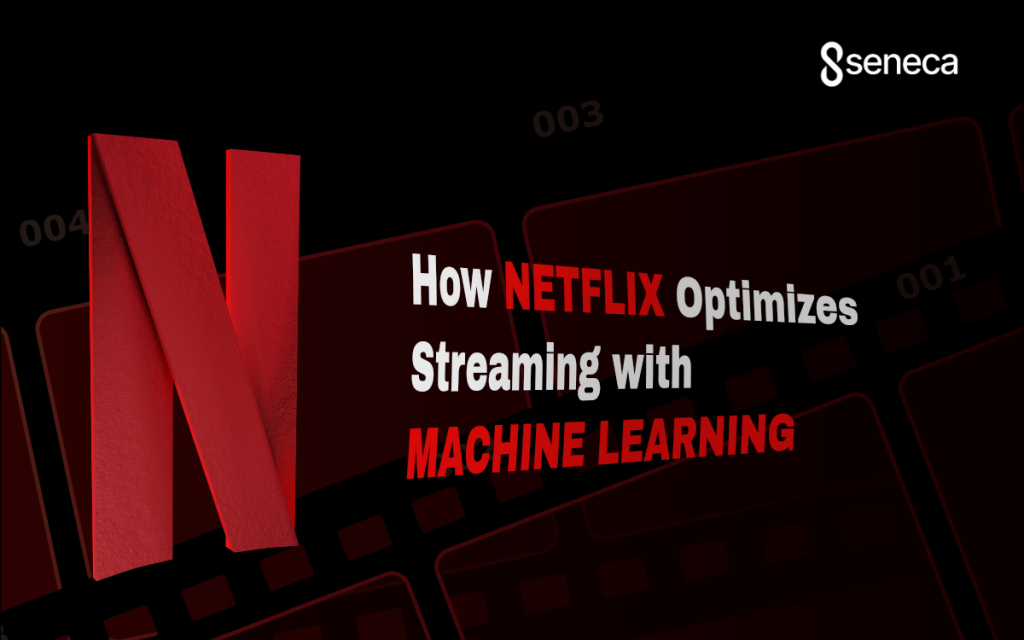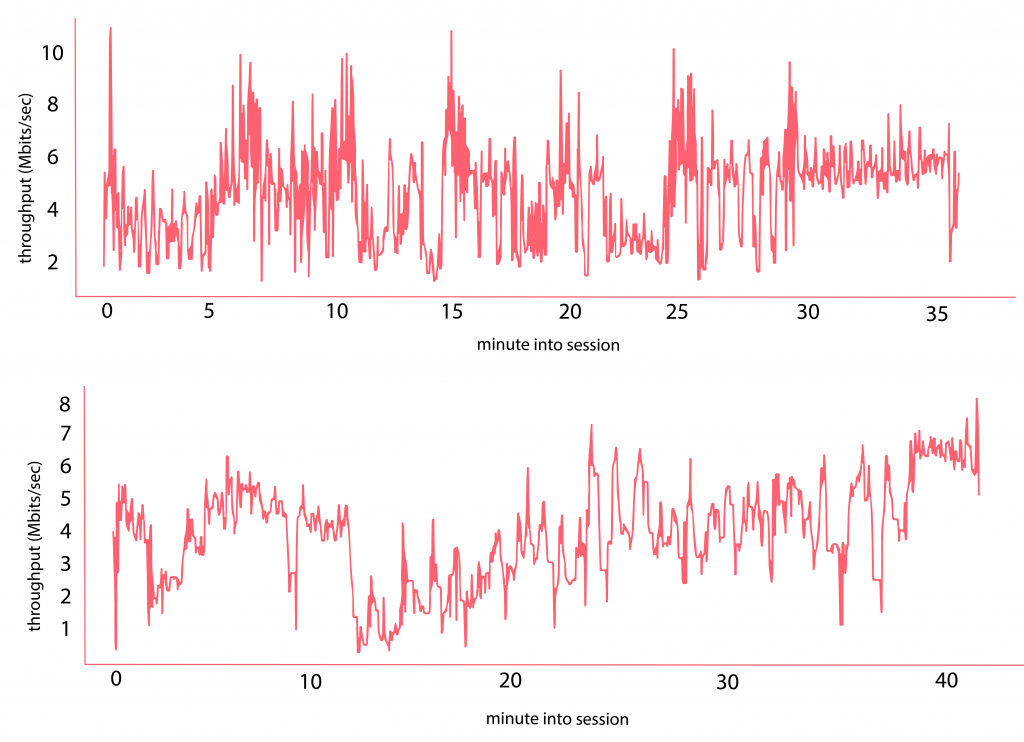How Netflix Optimizes Streaming with Machine Learning
Netflix uses machine learning to improve streaming by optimizing video quality, predicting network changes, and adapting playback smoothly.

Streaming high-quality video to millions of people worldwide is no small feat. With so many different devices, networks, and viewing habits, delivering a seamless experience requires smart solutions. Instead of a one-size-fits-all approach, they leverage machine learning to tackle complex streaming challenges. In this post, we’ll explore how data-driven techniques help optimize video quality, reduce buffering, and enhance the overall viewing experience.
Netflix is streaming to over 117 million members globally, and more than half of them are outside the U.S., which is a huge opportunity to grow. Delivering a high-quality experience to such a diverse audience is a massive technical challenge. A big part of that is setting up and maintaining servers worldwide, but another major piece is optimizing how content gets streamed to different devices under different conditions. As the company expands to more markets with different viewing habits and network capabilities, a “one-size-fits-all” approach just doesn’t work anymore. For example:
- People browse and watch differently on mobile vs. Smart TVs.
- Cellular networks can be way more unstable than home broadband.
- Some markets deal with higher network congestion than others.
- Different devices have different hardware, which affects internet speeds and streaming quality.
They need to adapt their methods to these changing conditions to make sure everyone gets a great experience. At Netflix, they collect real-time data on network performance, device conditions, and user experience (like video quality), which allows them to apply statistical modeling and machine learning to improve streaming. We’ve previously talked about how data science helps Netflix distribute content across servers. Now, let’s dive into how the company tackles challenges on the device side.
Network Quality Prediction
Network quality is tricky to measure and even harder to predict. Standard metrics like bandwidth and round-trip time only tell part of the story—stability and predictability matter a lot for streaming. A better way to characterize network quality helps them analyze network performance, choose the right initial video quality, and adjust quality dynamically during playback.
Here’s an example: when looking at real network throughput from user sessions, they see that it fluctuates a lot. Can they predict what it’ll look like in the next 15 minutes based on the last 15? How can they factor in historical trends or extra data from our servers to make better guesses? Even if they can’t predict the exact moment a network drop will happen (it could be caused by anything from a microwave turning on to driving through a tunnel), can they at least estimate the range of likely fluctuations?

Because the company collects data at scale, it can use more advanced models that combine historical patterns with context to make smarter predictions about network quality.
Adapting Video Quality During Playback
Shows and movies are encoded at multiple quality levels to support different devices and networks. Based on current conditions, adaptive streaming algorithms decide which quality level to stream in real-time. The goal? Optimize the user experience, which can mean balancing several factors:
- Reducing the wait time before playback starts.
- Maximizing video quality.
- Minimizing buffering interruptions.
- Keeping quality consistent rather than fluctuating too much.
These factors trade off against each other. Streaming in the highest quality possible might lead to more buffering. Downloading more upfront reduces buffering risk but increases wait time. The tricky part? The effects of a decision aren’t always immediate—a quality boost might not cause issues right away, but later it could drain the buffer and cause a rebuffer. This delayed feedback loop is a classic challenge in optimal control problems, and machine learning in streaming (especially reinforcement learning) has a lot of potential to improve decision-making here.
Predictive Caching
Another way machine learning helps is by predicting what a user is likely to watch next and caching part of it on their device before they hit play. If we can get this right, videos start faster and/or play in higher quality from the beginning.
For example, if someone has been binge-watching a series, chances are they’ll play the next episode. By combining viewing history with recent interactions and other contextual data, we can turn this into a supervised learning problem: how do we maximize the chances of catching the right content while managing storage and bandwidth constraints? We’ve seen major improvements in startup time by using predictive caching models.
Detecting Device Anomalies

Netflix runs on thousands of different devices, from laptops and tablets to Smart TVs and streaming sticks. New devices come out all the time, and existing ones get firmware updates that can affect performance. Sometimes these changes go smoothly, but at this scale, it’s inevitable that some will cause problems—maybe the app won’t start properly, playback is glitchy, or something else degrades the experience.
Catching these issues is tough. Automated alerts help, but setting the right thresholds is tricky. A sensitive trigger generates too many false positives, wasting time on unnecessary investigations, while a strict trigger might miss real issues. But they have historical alert data, including cases where human reviewers confirmed whether an issue was real or not. Using this, they train models to predict the likelihood that a given anomaly is actually a problem.
Even when they know there’s an issue, figuring out the cause can be hard. Is it a network issue with a specific ISP? A Netflix app update? A firmware change from the device manufacturer? Is it affecting all devices in a group or just certain models? Statistical models help untangle these factors by controlling for various variables.
By prioritizing real device reliability issues with predictive modeling, they’ve already cut down on unnecessary alerts while keeping false negatives low, making Netflix’s device reliability team way more efficient.
Why Machine Learning?
These are just a few examples of how machine learning helps solve real problems in streaming. It works particularly well in cases where:
They have tons of data (117M+ members worldwide).
The data is complex and hard to manually analyze.
There are underlying patterns in things like network usage, viewing behavior, and device capabilities.
Optimizing streaming across diverse networks and devices is a core part of Netflix’s strategy. If this kind of work excites you and you want to push machine learning into new areas, reach out or check out our science, analytics, and software engineering job openings!
Related articles

Feb 18, 2025
Read more
Dark Mode vs. Light Mode: Which is Better for UX?
Dark or light UI? UX design affects readability, usability, and user experience. Learn how the environment influences the best choice.

Feb 14, 2025
Read more
Website Design Mistakes That Are Killing Your SEO
Are website design mistakes hurting your SEO? Learn how to fix these 5 common errors and improve your search rankings today!

Feb 12, 2025
Read more
Vibe Coding: The Future of Programming
Vibe Coding is here—just tell AI what you want, and it builds it. No syntax, no struggle—just pure creation

Feb 06, 2025
Read more
Big Tech is Quietly Taking Over AI Startups Without Buying Them
Big Tech is absorbing AI startups through pseudo-acquisitions, gaining talent and technology while avoiding regulatory hurdles.

Jan 23, 2025
Read more
Is No Code the Next Evolution in Development?
You Don’t Need to Be a Developer to Build Something Amazing—Unleash Your Creativity with Low Code/No Code Tools.

Jan 17, 2025
Read more
Design Thinking: Solving Problems and Building Better Products
See how design thinking helps solve problems, create simple solutions, and design products people actually need.
